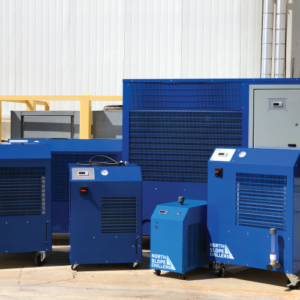Welding is a common procedure used to join two or more pieces of metal for use in a wide range of applications. The process can be done at outdoor locations (e.g. farms, highways, construction sites) or in an indoor setting, typically shops and factories. [read: An Introduction to Welding] Welding requires the following components: metals […]
Cooling During Injection Molding
Injection molding is a manufacturing process wherein raw materials, most commonly thermoplastic resins in pellet form, are consecutively melted, remolded and cooled. This manufacturing method is typically used in mass-production processes were the same part is being produced thousands or even millions of times in succession. The components made through this process can be found […]
Cooling in Printing
Cooling in Printing Throughout the printing process heat is generated as a result of friction between component parts and then transferred to ink and paper. There is also an elevated ambient temperature within the press room. This increased heat can deteriorate the quality of the ink and the overall quality of the printing operation. Printing […]
Determining Chiller Size
We cannot overstate the importance of selecting a correctly sized chiller. Undersized chillers won’t correctly cool your process equipment or materials. Oversized chillers will work just fine, but why pay more than you need to? When you select a chiller of the proper size, you can rely on several years of efficient cooling. Let’s explore the different parameters one needs to find the perfect chiller size.
Chemical Storage: How Should Chemicals Be Stored?
How should chemicals be stored? Many companies purchase, transport and store chemical drums in warm or hot environments. Such chemical storage can be problematic as many types of chemicals are adversely affected by exposure to hot temperature environments. Knowing how to store chemicals safely will prevent costly waste and help keep your operation running smoothly. […]


